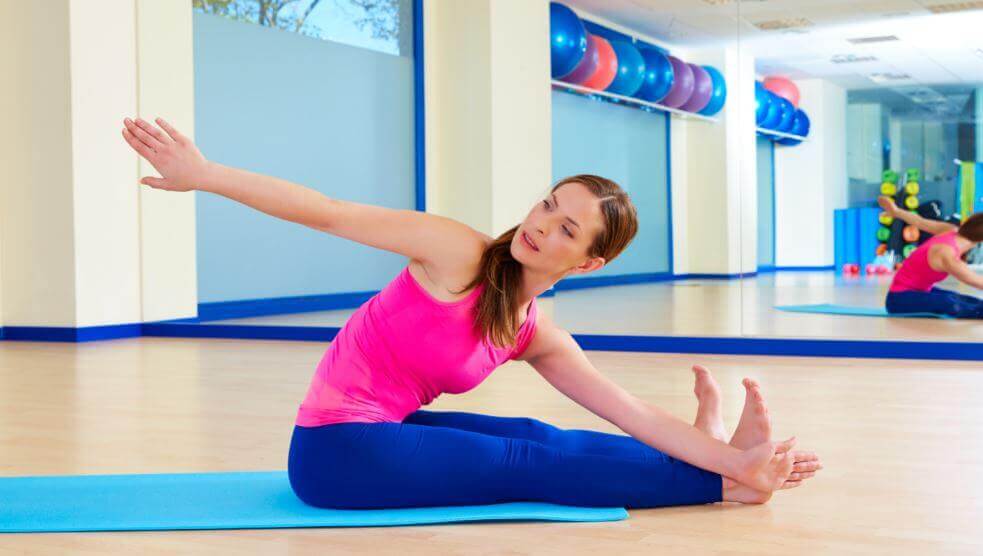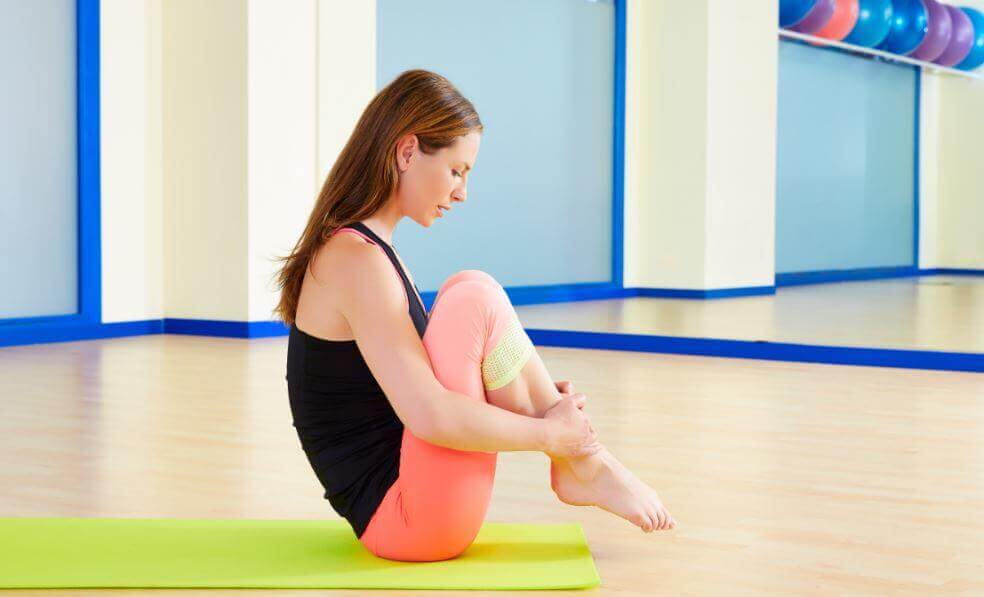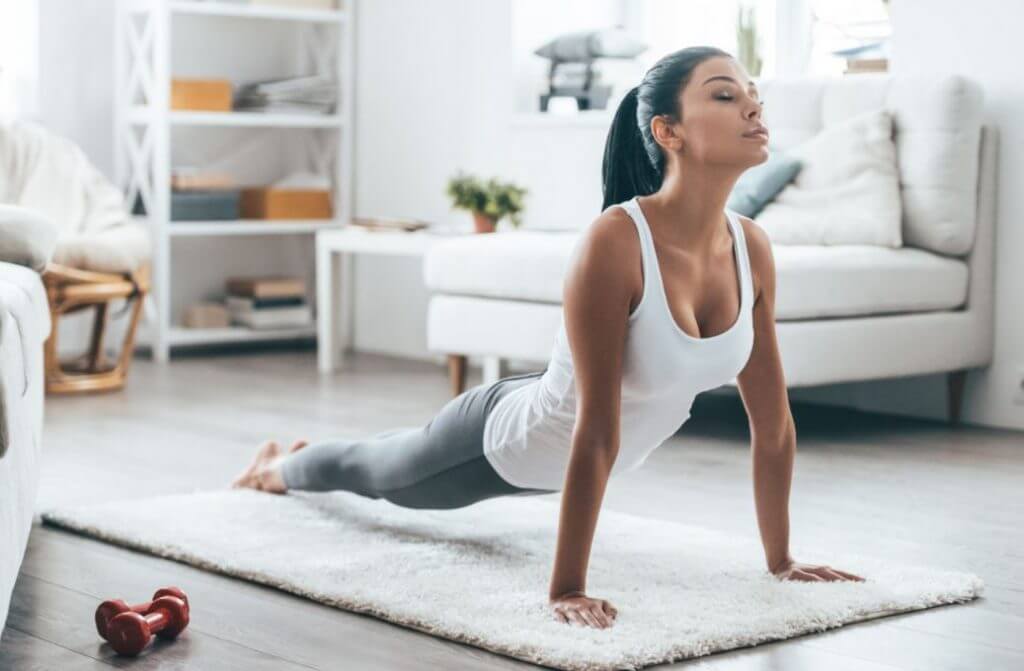Pilates for Back Pain: What you Need to Know

Back pain is a problem that affects or will affect at some point, a large part of the population. Therefore, finding activities that can help alleviate these ailments is especially relevant. One of those options is to do Pilates for back pain. Let’s take a look at the benefits it has and some exercises that we can perform.
The benefits of Pilates for back pain
Mobility
First and foremost, doing Pilates mobilizes the entire spine. While it may seem logical, the reality is that the simple act of moving helps to alleviate back pain. Unfortunately, today it’s very common for people to maintain bad postures over long periods of time.
In this sense, the movements we do in Pilates help to mobilize the entire spine. Another important factor is that pelvis control is a key element in Pilates. The movements of pelvic anteversion and retroversion that we perform during the different exercises also mobilize the lower back area.
Strength
Secondly, doing Pilates strengthens your back muscles. In general, exercises consist of reaching certain positions and maintaining them; always controlling your breathing and contracting the pelvic floor and abdominal waist.
Maintaining these postures makes the muscles work, and the abdominal waist is a very important element for back pain.
Postural reeducation
One of the aspects that we work the most with Pilates is the correct position of the whole body while doing exercises. During Pilates, we never make any movements without considering the position of several vital structures, including the pelvic floor, abdominal waist, scapulae, and head.

This helps the body to become accustomed to incorrect postures. It’s a vital matter since incorrect postures affect our body structures every single day.
Therefore, it’s essential to re-educate the body using muscles, vertebrae, ligaments, and tendons in a healthy way and not unnaturally, which ends up causing back pain.
Flexibility
Finally, another benefit of Pilates that stands out is the effect it has on flexibility. Stretching is one of the bases of this exercise.
Having a flexible body goes a long way in preventing back pain. For example, stretching the hamstrings causes less pulling on the lumbar spine.
Pilates exercises for back pain
Below, we’ll describe some of the exercises that can help you work through all the aspects mentioned above. We’ll focus on those that work the back muscles the most.
Breathing control
The first thing we learn when doing Pilates is that it’s also a great ally for back pain. In this discipline, we’re working to breathe from our chest, that means inflating the rib cage without moving our abdomen.
When exhaling, you must exert force to bring your navel ‘in and up’, which means you have to suck in your navel and pretend you’re moving it towards your head. This is a position we maintain during the vast majority of exercises in Pilates, and it’s the main culprit behind the intense abdomen work.
Supine exercises
Perform the following movements in a slow and controlled manner while lying on your back and keeping your navel ‘in and up’, as we’ve previously explained:
- Bring the arms back until you stretch them above your head.
- Bring your knees closer to your chest. From this position, draw circles with your legs.

- After bringing the knees closer to your chest, hold them tightly with your hands. Force your legs as if you wanted to let go, but don’t actually let it happen.
Prone exercises
Lying face down, you can perform various exercises. In addition to the movement itself, you should always maintain the contraction of the pelvic floor and abdominal waist.
- Using your forearms as support, lift up your upper body while exhaling. Then hold the position, breathe in, and return to the starting position while you breathe out.

- After lifting your upper body, do a stroking motion, as if you were swimming. Engage your back in the arm movement. Finish the exercise with your arms parallel to your body and a great spine extension.
- Another option is to ‘swim’ from the position in the first movement. In this case, you have to extend your arms and lift your feet a little bit from the ground, with your core extended as well. While in this posture, lift one arm and the opposite leg, return to the initial position, and finally lift the other arm and leg. Start by doing this slowly, and then increase the speed as you get used to the movement.
Pilates for back pain: conclusion
In any case, the important factor when doing Pilates is doing it well. If we want to do Pilates specifically for back pain, it’s important to learn from a professional.
Especially in the first sessions, it’s essential that the expert watches our movements, and they make sure we maintain all the required positions. Once we know how to perform them correctly, we can practice from home to alleviate the aches that give us so many problems.
Back pain is a problem that affects or will affect at some point, a large part of the population. Therefore, finding activities that can help alleviate these ailments is especially relevant. One of those options is to do Pilates for back pain. Let’s take a look at the benefits it has and some exercises that we can perform.
The benefits of Pilates for back pain
Mobility
First and foremost, doing Pilates mobilizes the entire spine. While it may seem logical, the reality is that the simple act of moving helps to alleviate back pain. Unfortunately, today it’s very common for people to maintain bad postures over long periods of time.
In this sense, the movements we do in Pilates help to mobilize the entire spine. Another important factor is that pelvis control is a key element in Pilates. The movements of pelvic anteversion and retroversion that we perform during the different exercises also mobilize the lower back area.
Strength
Secondly, doing Pilates strengthens your back muscles. In general, exercises consist of reaching certain positions and maintaining them; always controlling your breathing and contracting the pelvic floor and abdominal waist.
Maintaining these postures makes the muscles work, and the abdominal waist is a very important element for back pain.
Postural reeducation
One of the aspects that we work the most with Pilates is the correct position of the whole body while doing exercises. During Pilates, we never make any movements without considering the position of several vital structures, including the pelvic floor, abdominal waist, scapulae, and head.

This helps the body to become accustomed to incorrect postures. It’s a vital matter since incorrect postures affect our body structures every single day.
Therefore, it’s essential to re-educate the body using muscles, vertebrae, ligaments, and tendons in a healthy way and not unnaturally, which ends up causing back pain.
Flexibility
Finally, another benefit of Pilates that stands out is the effect it has on flexibility. Stretching is one of the bases of this exercise.
Having a flexible body goes a long way in preventing back pain. For example, stretching the hamstrings causes less pulling on the lumbar spine.
Pilates exercises for back pain
Below, we’ll describe some of the exercises that can help you work through all the aspects mentioned above. We’ll focus on those that work the back muscles the most.
Breathing control
The first thing we learn when doing Pilates is that it’s also a great ally for back pain. In this discipline, we’re working to breathe from our chest, that means inflating the rib cage without moving our abdomen.
When exhaling, you must exert force to bring your navel ‘in and up’, which means you have to suck in your navel and pretend you’re moving it towards your head. This is a position we maintain during the vast majority of exercises in Pilates, and it’s the main culprit behind the intense abdomen work.
Supine exercises
Perform the following movements in a slow and controlled manner while lying on your back and keeping your navel ‘in and up’, as we’ve previously explained:
- Bring the arms back until you stretch them above your head.
- Bring your knees closer to your chest. From this position, draw circles with your legs.

- After bringing the knees closer to your chest, hold them tightly with your hands. Force your legs as if you wanted to let go, but don’t actually let it happen.
Prone exercises
Lying face down, you can perform various exercises. In addition to the movement itself, you should always maintain the contraction of the pelvic floor and abdominal waist.
- Using your forearms as support, lift up your upper body while exhaling. Then hold the position, breathe in, and return to the starting position while you breathe out.

- After lifting your upper body, do a stroking motion, as if you were swimming. Engage your back in the arm movement. Finish the exercise with your arms parallel to your body and a great spine extension.
- Another option is to ‘swim’ from the position in the first movement. In this case, you have to extend your arms and lift your feet a little bit from the ground, with your core extended as well. While in this posture, lift one arm and the opposite leg, return to the initial position, and finally lift the other arm and leg. Start by doing this slowly, and then increase the speed as you get used to the movement.
Pilates for back pain: conclusion
In any case, the important factor when doing Pilates is doing it well. If we want to do Pilates specifically for back pain, it’s important to learn from a professional.
Especially in the first sessions, it’s essential that the expert watches our movements, and they make sure we maintain all the required positions. Once we know how to perform them correctly, we can practice from home to alleviate the aches that give us so many problems.
All cited sources were thoroughly reviewed by our team to ensure their quality, reliability, currency, and validity. The bibliography of this article was considered reliable and of academic or scientific accuracy.
- G. Rodríguez, I. Oliveira. Método Pilates y calidad de vida en pacientes con dolor de espalda. Transmisión del Conocimiento Educativo y de la Salud, ISSN-e 1989-6247, Nº. 1 (ENE-FEB), 2014, págs. 1-12
- C. Wells, G. Kolt, A. Bialocerkowski. Defining Pilates exercise: A systematic review. Complementary Therapies in Medicine. Volume 20, Issue 4, August 2012, Pages 253-262
- J. Kloubec. Pilates for Improvement of Muscle Endurance, Flexibility, Balance, and Posture. Journal of Strength and Conditioning Research: March 2010 – Volume 24 – Issue 3 – p 661-667
This text is provided for informational purposes only and does not replace consultation with a professional. If in doubt, consult your specialist.








